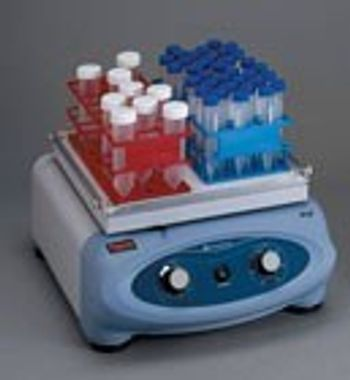
Assays from academics to industry require shakers. In the life sciences, for example, Ira Augenzucker, product line manager at Labnet International, a Corning Life Sciences company in Edison, NJ, says, “The new uses of shakers basically mimic what you see in the industry, which is an increase in the use of genomics.” He adds, “Shakers are used in almost every application in some fashion.” For example, he points out the wide use of shakers in cell culture work.
For years scientists have used shakers when growing bacteria such as E. coli to keep food and oxygen flowing to the cells. “For the past 10 years,” says Charlie Villano, product manager for shakers and CO2 incubators at Eppendorf North America (Hauppauge, NY), “shakers have moved into new technologies, including using cells to grow final products, such as growing algae for biofuels.” Furthermore, an increasing number of scientists work with cells in suspensions, which requires the addition of CO2 to maintain the pH. “It can be easier to grow the cells in a shaking flask,” says Villano. “In the past, you placed a shaker inside a CO2 incubator, but some CO2 incubators now have builtin shakers.”
Seeking savings
Labs from academic institutions to multinational manufacturers always look for savings. “Almost every lab is crowded for space and running on a tight budget,” says Augenzucker. “That makes it useful when instruments provide more than one function.”
For example, a laboratory might use a variety of tube sizes and want to shake them in different motions. “In some cases, you might want tumbling—like turning the tube end over end— that provides agitation, and other times you might want gentle rolling,” Augenzucker says. “We offer a platform that does either and anything in between.”
